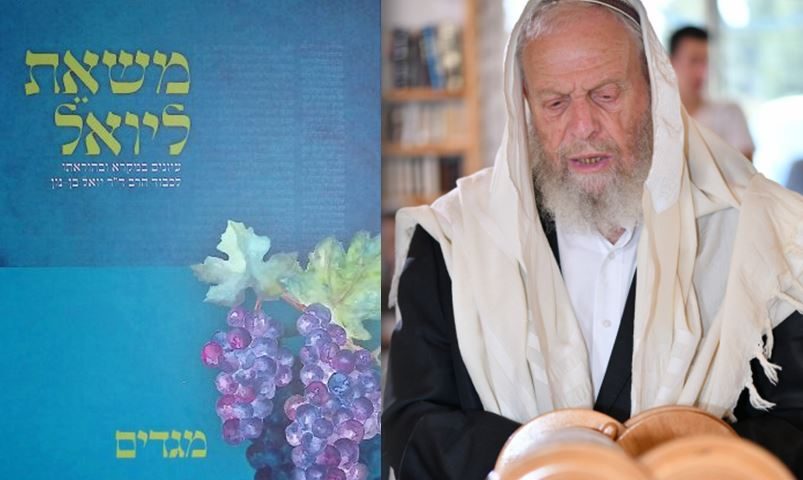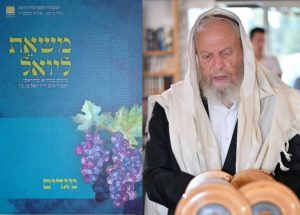Alt+SHIFT: Tribute to R. Yoel Bin-Nun

Yitzchak Blau is making an encore appearance with this special summer supplement to his popular Alt+SHIFT series—that’s the keyboard shortcut allowing us quick transition between input languages on our keyboards. For many readers of TRADITION that’s the move from Hebrew to English (and back again). It offers R. Blau’s insider look into trends, ideas, and writings in the Israeli Religious Zionist world, helping readers from the Anglo sphere to gain insight into worthwhile material available only in Hebrew. See the archive of all past columns in this series.
 Mas’et leYoel: A Tribute to Rabbi Dr. Yoel Bin-Nun, edited by Yoav Barzilai with Jonathan Grossman, Yosef Ofer, Yehoshua Reiss, Megadim 63 (Alon Shevut 2024), 496 Hebrew and 54 English pp.
Mas’et leYoel: A Tribute to Rabbi Dr. Yoel Bin-Nun, edited by Yoav Barzilai with Jonathan Grossman, Yosef Ofer, Yehoshua Reiss, Megadim 63 (Alon Shevut 2024), 496 Hebrew and 54 English pp.
The late twentieth-century revolution in Tanakh study in the Religious Zionist world impacted both quantity and quality as yeshiva schedules started to include more hours of Bible study while employing new methods of interpretation. Megadim, a journal of Herzog College, recently published a festschrift in honor of R. Yoel Bin-Nin, one of the central figures shaping this explosion in biblical study. As the volume includes twenty-three Hebrew essays and one in English, we will have to be selective in our review. (The entire book is open-access here.)
Two helpful introductory articles, one in Hebrew by Yuval Cherlow and one co-authored in English by Yaakov Beasley and Asher Y. Manning, complement each other. The former discuses three reasons why the religious community did not previously engage in serious Tanakh study: emphasis on the Oral Law, the gap between life in exile and the national sovereignty portrayed in the bible, and concerns about biblical criticism. The latter lays out some of the polemics involving the work of Yoel Bin-Nun and those debates will frame our ensuing discussion.
In the Tanakh be-gova eynayim (Bible at “eye level”) controversy, R. Tzvi Tau and several rabbis from the Hardal world condemned R. Yoel and others for relating to our biblical heroes as human figures who struggle with normal frustrations and difficulties. For example, R. Yoel famously suggested that Joseph thought Jacob was in on the sale (Jacob did send Joseph to the brothers knowing of their enmity toward his favored son) in accordance with the paradigm of each generation having a rejected son. Therefore, Joseph did not contact his father for two decades even though he could have easily sent a message from Egypt to Canaan. Beasley and Manning outline R. Yoel’s response to such criticism.
The English introductory essay also discusses a critique from academics who view R. Yoel’s teaching as intuitive rather than methodologically rigorous and who see him as relying on outmoded scholarship. In response, Beasley and Manning provide a four-point defense of R. Yoel’s method. Unlike the previous debate, few authors have previously addressed this potential criticism.
A third argument that actually has national implications appears in several articles. For years, the Ministry of Education’s Bible curriculum was heavily influenced by Nechama Leibowitz for whom a classic lesson involves contrasting the strengths and weaknesses of two traditional commentators. What factors lead to Ibn Ezra and Ramban’s debate whether Jethro came before or after the revelation at Sinai? This meant both giving the commentators pride of place and a tendency to narrowly investigate individual pesukim. R. Yoel wanted to shift the focus to Tanakh study which begins with only the biblical text itself and demands looking at larger structures. Instead of holding a Torat Hayyim or Mikraot Gedolot, the teacher arrives with a one-volume Tanakh in hand.
Leibowitz and Bin-Nun also differ regarding the importance of realia, understanding the history, geography, and culture of the Ancient Near East. Nechama thought such information almost insignificant whereas it is a major part of R. Yoel’s interpretative endeavors. He will try to determine the geographic location of all the places the Israelites stopped in the desert in Numbers 33; Nechama will suffice by asking what religious and moral messages the list cataloging their journey teaches. Yehuda Brandes’ article discusses this debate while asking to what degree Hazal show interest in realia.
Comparing the approaches of Jonathan Grossman and R. Yoel deepens the methodological divide. According to Grossman, bringing in realia can prove misleading since the text may value literary concerns over historical ones. Here, Grossman discusses the enigmatic inn story (Exodus 4:20-26) where someone’s life is in danger (probably Moses’) and Zipporah saves the day by circumcising the baby. Ibn Ezra explains that Moses was derelict in not circumcising his son and Zipporah’s act removes the problem. Rashbam says that Moses’ sin was in his reluctance to go on the divine mission and the mila provided atonement like a sacrifice. Grossman sets up the problem well: Ibn Ezra’s approach is better in terms of circumcision as the solution but only Rashbam’s approach links this tale to the wider context of the chapter.
Grossman offers a creative alternative which sees this story as an example of a “rebirth” in which the hero adopts a new identity. Prior to this episode, we lack clarity if Moses self-identifies as an Israelite, a Midianite, or an Egyptian. The near death experience is not about sin and punishment but about a new Moses emerging. Here the difference in methodologies comes to the fore. R. Yoel argues that other cultures in the ancient world also practiced circumcision and Moses was nervous that a mila in Midian would be understood as a Midianite act. This explains his delaying the mitzva. According to Grossman, we should not ask about historical context but rather focus on how Tanakh chooses to portray circumcision, the ultimate act of identifying with Jewish peoplehood (see Exodus 12:47) irrespective of where it takes place. Zipporah’s action finalizes the clarification of her husband’s identity; Moses is an Israelite.
[Read Hayyim Angel’s “Torat Hashem Temima: The Contributions of Rav Yoel Bin-Nun to Religious Tanakh Study,” TRADITION (Fall 2007).]
Moving away from polemics, two authors address the impact this revolution in Bible study has had on Israeli society. Yehoshua Reiss depicts the many achievements of Machon Herzog including the amazingly popular summer Yemei Iyyun (running this week in Alon Shevut). However, with impressive candor, he admits that this appeal has not reached secular Israelis who do not attend the summer study days (nor do Haredim). This point takes us to Binyamin Lau’s essay about his 929 initiative to bring biblical study to the broader Israeli community. The program has experienced significant success but it remains to be seen if it can help restore Tanakh to an important and influential place in Israeli culture.
I would close by mentioning two impressive articles not connected to R. Yoel’s methodology. Yoshi Fargeon offers a good analysis of whether Psalms 107 is about national or universal redemption. Abraham Shammah discusses the relationship between the laws of levirate marriage in Deuteronomy (25:5-10) and the Tamar episode in Genesis 38. Among many interesting points, he shows how literary technique impacts on legal sections and not just on narrative portions.
There is a good deal to lean from here, particularly for readers thinking deeply about various methods of Tanakh study.
Yitzchak Blau, Rosh Yeshivat Orayta in Jerusalem’s Old City, is an Associate Editor of TRADITION.
